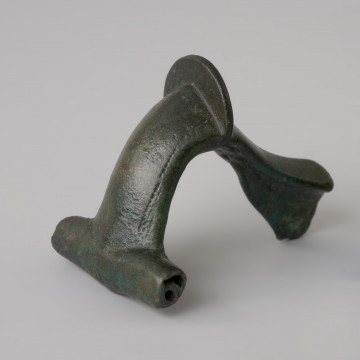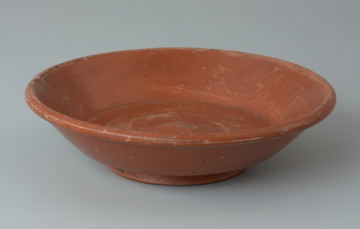
Tortoiseshell buckle
National Museum in Szczecin
Part of the collection: Antiquity
The presented strap end, finished with a ring with a protrusion, was made from bronze. The main function of these items was to weigh down the ends of straps, which were then attached to a belt worn on the hips. Small items, such as leather pouches, knife pouches, and casket keys were tied to them. During the Roman period, in the 2nd half of the 2nd century, the strap ends had really various and often elaborate shapes reflecting local tastes. Specimens ending in a ring with a protrusion, discovered throughout northern and eastern Europe, are mostly made of iron. The pieces from Pomerania are distinguished not only by the use of bronze, from which they were cast, but also by their more massive proportions. The strap end comes from the cemetery of the Wielbark culture in Gostkowo, Bytów poviat, discovered at the end of the 19th century. The archival records state that it was “a gift from Nitz in 1893”. The necropolis in Gostkowo, located in the area of the sandpit, was bi-ritual – it included both the inhumation and cremation graves. This is typical of the people of the Wielbark culture, identified with the Germanic Goths and Gepids. In 1935 or 1936, the archaeological rescue excavations of the cemetery in Gostkowo were carried out by the German archaeologist, Wilhelm Petzsch. During the excavations, he uncovered at least six cremation graves.
Bartłomiej Rogalski
Author / creator
Dimensions
cały obiekt: height: 1.9 cm, width: 5.3 cm
Object type
furnishings and equipment; belt; belt fitting
Technique
casting
Material
bronze
Creation / finding place
Owner
Muzeum Narodowe w Szczecinie
Identification number
Location / status

National Museum in Szczecin

1796
National Museum in Szczecin

National Museum in Szczecin
DISCOVER this TOPIC
Museum of King Jan III's Palace at Wilanów
DISCOVER this PATH
Educational path